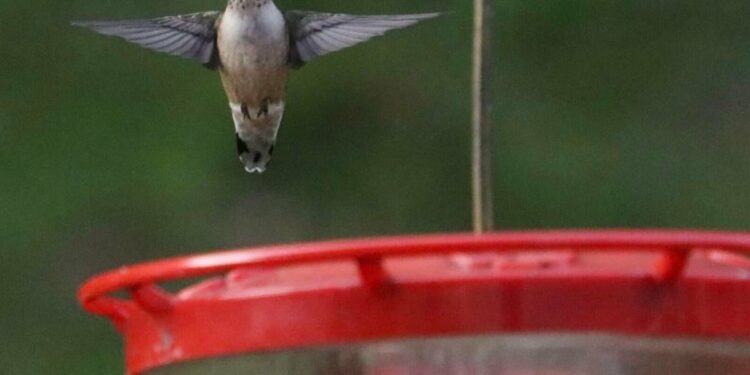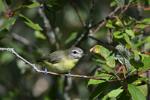Ruby-throated hummingbirds are amazing to watch, as ephemeral as soap bubbles, rising up and disappearing into a bush, writes columnist Clellie Lynch.
DAN LYNCH
And they must consume one and a half times their weight — approximately two-tenths of an ounce — every day. Flower nectar is more important to these avians than flower color. Hummingbirds are more important to the flowers than insects, since they pollinate in the rain.
Not only are hummers exquisitely beautiful, they are incredible aerialists, able to fly backwards, forward and straight up and down and side to side and reach speeds of 30 miles an hour. You try it!
These birds are relatively tame and the early explorers came back from the New World naming them for speed, flight, size and method of feeding. My favorites are the Spanish zumbadores (combination of humming and zooming); French oiseau-mouche (bird-fly, because it was the size of a fly) and the Portuguese beija flor (kiss flower, what the bird does from dawn to dusk).
HEADING SOUTH
Soon these tiny bulked-up birds with bulging nectar bellies will head south, usually one at a time, although there have been occasional reports of a handful traveling together. Off they will go, following the blooming flowers. Migration has sometimes been defined as short-term opportunities in habitats that cannot support a year-round population. Our ruby-throated hummingbirds fly along the coast of Texas and Mexico to hunker down for the winter amid many continually blossoming tropical plants and shrubs.
Most will be gone here by the first week of October. Then it will be a winter wait until that first one hovers at the kitchen window on May 6.
Clellie Lynch is a regular Eagle contributor.
Source link : http://www.bing.com/news/apiclick.aspx?ref=FexRss&aid=&tid=66d8790e621449689d28a289c2674586&url=https%3A%2F%2Fwww.berkshireeagle.com%2Farts_and_culture%2Fhome-garden%2Fclellie-lynch-september-ruby-throated-hummingbirds-heading-south%2Farticle_dfce9caa-6a13-11ef-817b-f34699c0aff8.html&c=7344814818697444494&mkt=en-us
Author :
Publish date : 2024-09-04 03:00:00
Copyright for syndicated content belongs to the linked Source.













